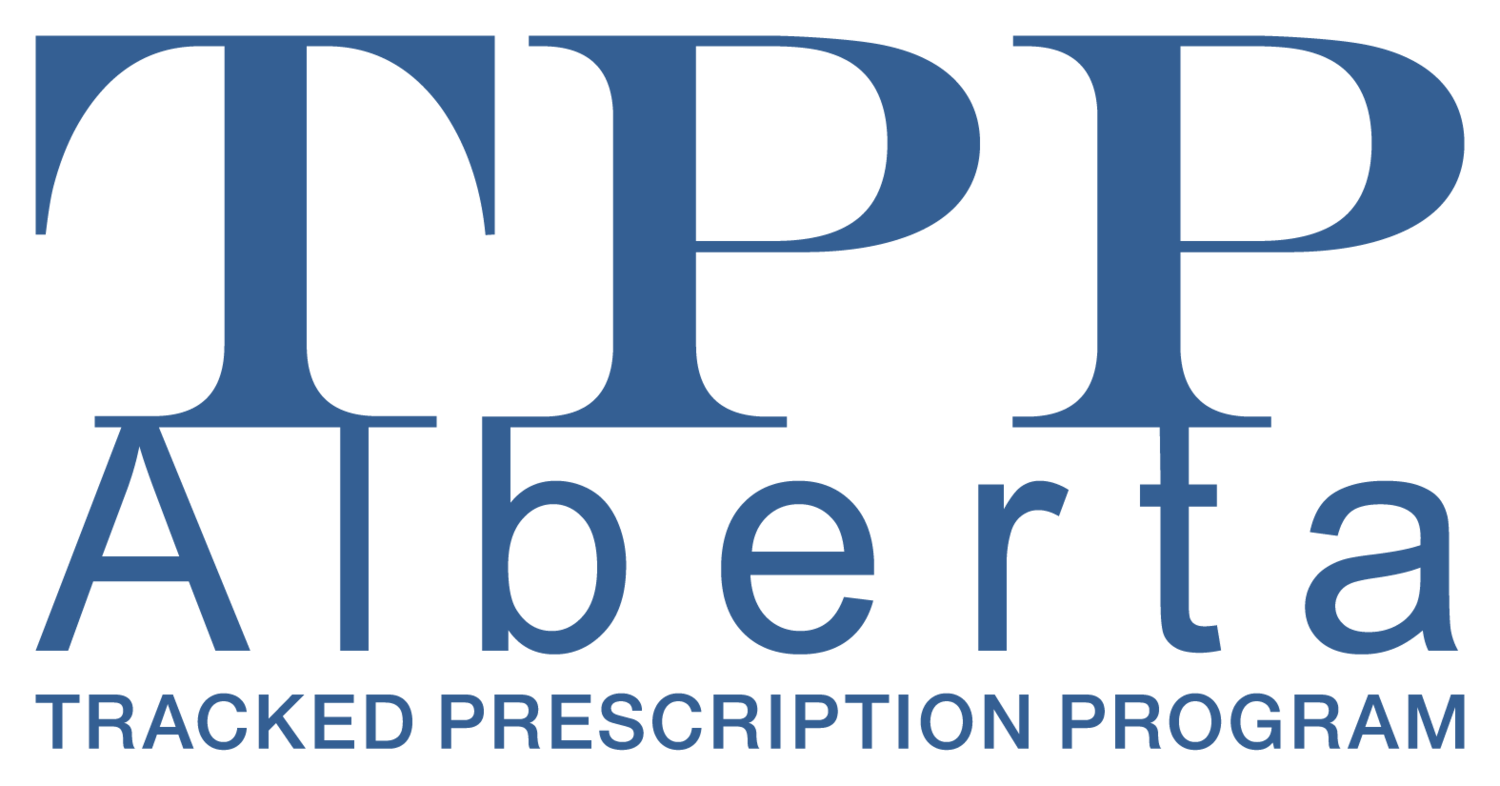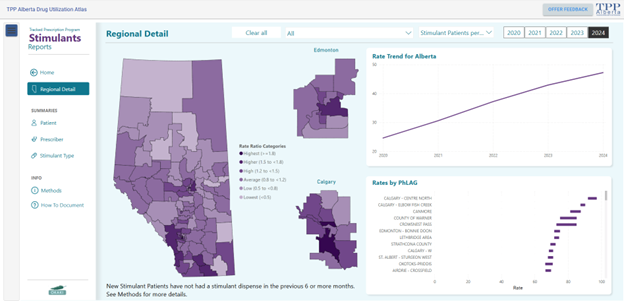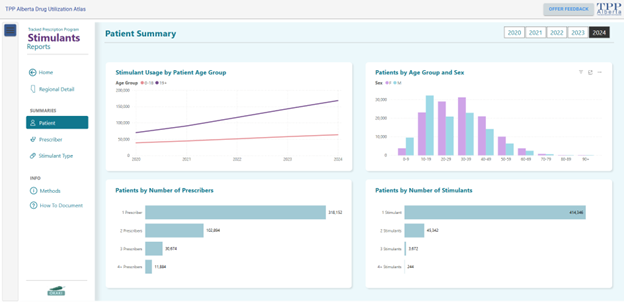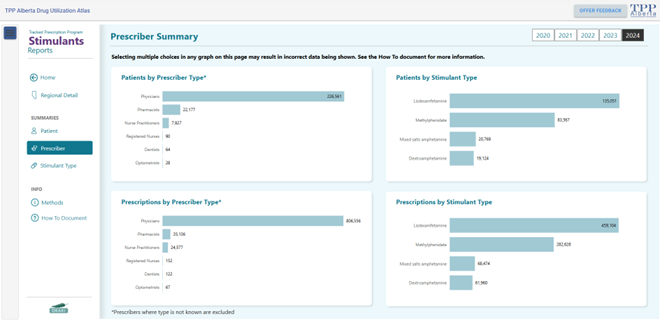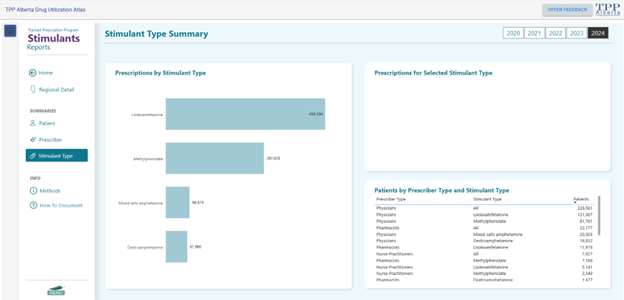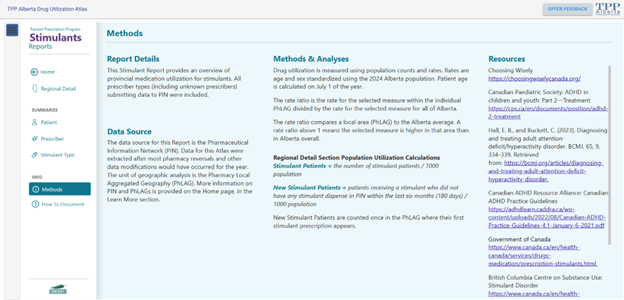Explore the updated TPP Atlas
Revised Oct 28, 2025
TPP Atlas: an interactive platform
The Tracked Prescription Program (TPP Alberta) is pleased to share the latest version of our online prescribing resource, the TPP Alberta Drug Utilization Atlas (TPP Atlas).
Summarizing prescription dispensing data trends in Alberta
The TPP Atlas is a dynamic, publicly accessible online resource that provides detailed insights into prescription drug utilization in Alberta. The TPP Atlas data is updated annually and provides prescribing data to support ongoing monitoring and evidence-informed clinical practice. It focuses on medications with higher potential for misuse, utilizing community pharmacy dispensing data from the Alberta Netcare Pharmaceutical Information Network (PIN).
The TPP Atlas includes five years of data across these four TPP-monitored medication classes:
Opioids
Benzodiazepines/Z-drugs
Antibiotics
Stimulants
Information is presented through the following interactive views:
Regional Details are illustrated through a heatmap of dispensing rates, provincial trends and regional comparisons.
Patients are summarized across demographic characteristics as well as prescriber and medication counts.
Prescriber data is presented by prescriber type and medication type.
Medication Type presents additional detailed information by medication.
Section highlight: new stimulants section
We are excited to highlight the new stimulants section of the TPP Atlas. We also encourage prescribers to explore additional sections of the TPP Atlas, which provide interactive views on opioids, benzodiazepines and Z-drugs, as well as antibiotics.
Stimulants
The Regional Detail dashboard highlights prescribing trends for Alberta and rates across different areas (Pharmacy Local Aggregate Geographies or PhLAGs) based on new stimulant patients and stimulant patients per 1000.
Prescribers can use this data to:
Identify geographic variation in new stimulant patients.
Compare stimulant dispensing in their region to the provincial rate and neighbouring regions.
Use these insights to guide local public health interventions or quality improvement efforts.
The Patient Summary dashboard includes:
Stimulant usage by patient age group.
Patients by age group and sex.
Patients by number of prescribers.
Patients by number of stimulants.
Prescribers can use this data to:
Identify potentially high-risk populations by detecting higher dispensing for specific age groups or sex-based disparities that may require closer monitoring or tailored patient education.
Recognize the number of patients managed by multiple prescribers and how they may face increased risks of duplicative therapy, drug interactions, or inconsistent care, emphasizing the need for coordinated management and prompting prescribers to review their own practice.
Recognize the potential for patients to be dispensed more than one stimulant and use this insight to reflect on their own practice and the importance of collaboration with other health care professionals.
The Prescriber Summary dashboard includes:
Patients by prescriber type.
Patients by stimulant type.
Prescriptions by prescriber type.
Prescriptions by stimulant type.
Prescribers can use this data to:
Compare dispensing trends across prescriber types.
Compare prescription volumes by stimulant to identify the most and least frequently dispensed opioids.
Identify any increases or decreases in stimulant dispensed volumes over a five-year period.
The Stimulants Type Summary dashboard includes:
Prescription by stimulant type.
Prescriptions for selected stimulant type.
Patients by prescriber type and stimulant type.
Prescribers can use this data to:
Identify shifts in dispensing trends over time, potentially reflecting the impact of evolving clinical guidelines or educational initiatives.
Compare dispensing trends for stimulants by prescriber type.
Identify any increases or decreases in stimulant dispensing volumes over a five-year period.
The Methods page provides a comprehensive overview of the report’s scope, data sources, analytical methodology, calculation formulas, and relevant resources related to stimulant prescribing.
A How-to Document is available to provide further support for navigating the TPP Atlas.
A feedback form is also available to allow users to share their input on the TPP Atlas and to offer suggestions for future iterations.
Thank you for taking the time to explore the TPP Atlas. Your engagement supports informed, data-driven prescribing practices across Alberta.
